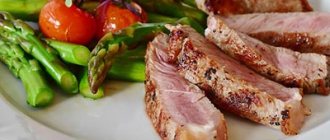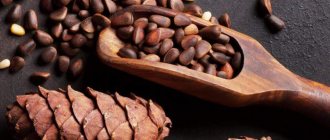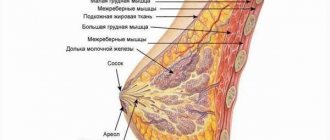When hunger strikes you between meals, it is tempting to overcome it with the first thing that comes to hand. Usually it turns out to be some kind of sweet or a bag of chips.
But not only will they make you feel sluggish, they're also full of unnecessary calories, so screw them. But you still want to eat.
Here's a great alternative: opt for healthier snacks that will help you not only feel full, but also stay fit. Here are the best options.
Healthy snacks. What to take with you for a walk and on the road?
Snack for a short walk
Even if you feed your child well before leaving the house and only walk for a couple of hours, after active games he may become seriously hungry and start to get upset out of the blue. This happens when there is a sharp drop in blood sugar, when it becomes difficult for any adult - not like a child - to control themselves. In this case, it would be nice to have a light snack on hand to “kill the worm,” raise your sugar level a little, and then calmly walk home without hysterics or scandals. It is important to remember that sweets are not very suitable as a snack - a sharp rise in sugar, followed by a sharp drop, will ruin your child’s mood again.
Snack options
1. Chopped vegetables, fruits or berries A classic of the genre. The simplest and most useful option. They don’t need to be cooked, they won’t spoil during the walk, and you can eat them with your hands. True, to make fruits and vegetables more attractive to some children, they will have to be cut. Sometimes the baby doesn’t want to eat half an apple, but once he peels it and serves it in slices, things go much better. In spring and summer, the set can be supplemented with seasonal berries. There is another plus - it is in the fresh air in an unusual environment that a hungry baby can try a stalk of celery or a piece of bell pepper. Therefore, if you want to diversify your baby’s diet and introduce new foods, you can safely experiment on walks.
2. Dry bread
Rice and corn are unlikely to fall into the “healthy” section, but there is no particular harm from them. But rye bread or bread made from whole grain flour of several grains are very healthy due to many vitamins and microelements. Don’t forget to stuff them, this is a must because the bread is very dry.
3. Fermented milk drinks
Unlike milk, they have less risk of spoiling after a couple of hours of walking, and the thick texture pleasantly envelops the stomach. It is important that these are the simplest options - drinking yogurt or kefir without sugar and industrial additives. All those ready-made fruit yoghurts in cute packaging are a source of huge amounts of sugar and food additives. If your child is already accustomed to sweet kefir, start preparing it at home - from regular kefir and banana, for example. Gradually reduce the sweetness of the drink and experiment with other fruits.
Lunches for long walks
They should be easy to prepare, filling, not too dirty, and require virtually no cutlery. And, most importantly, children like it.
1. Cream soups
If you are the happy owner of a child who loves pureed soups, the issue of lunches for walks can be solved once and for all by buying a thermos sippy cup. Then everything is simple - a lot of experiments with broccoli, cauliflower, carrots, potatoes, tomatoes, zucchini - in pure form or in various combinations. For satiety, you can prepare soups with the addition of meat, chicken or seafood, if the child likes them, and there is no risk of allergic reactions.
2. Pies
A healthy version of a pie is not a sea of cake with a drizzle of jam, but a thin layer of pastry with plenty of vegetables and possibly meat. You can use ready-made filo dough, or keep several pieces of homemade shortcrust pastry or dough for French quiche pie in the freezer (the dough is half flour and half potatoes). Then everything is simple - place baking paper in a mold with sides, and roll out the dough on top. The filling is a scattering of vegetables, which is filled with a mixture of eggs, cream and cheese (a healthier version is eggs, cottage cheese and a pinch of cheese on top 5 minutes before readiness). Bake for 30-60 minutes depending on ingredients and serving size. Filling options: broccoli with chicken, stewed leeks and cauliflower with ham, cauliflower with turkey, zucchini with suluguni, sweet pepper with meat.
3. Spring rolls
Chinese “spring rolls” are much easier to prepare than Japanese ones. You just need to soak a piece of rice paper in hot water, place chopped vegetables, chicken or shrimp on it, and wrap it up. Ready! It is convenient for a child to take such a roll with his hands; he receives healthy vegetables and protein, which are ideally combined together. Filling options: cucumber, carrot and chicken; avocado, cucumber, shrimp.
4. Sandwiches
As soon as children start eating sandwiches, the task of feeding them more or less healthy food during walks becomes much easier. You just need to follow a few rules to make this snack truly healthy. First: use whole grain bread, bread from several types of cereals or bread with bran - there are more vitamins and it is healthier for the gastrointestinal tract. Second: choose unsalted cheese as a filling, home-cooked meat - boiled or baked, your own cooked fish, omelet or egg. Third: the sandwich must contain a decent amount of some kind of vegetable (cucumber, tomato, no, not ketchup, ketchup does not count as a vegetable) or lettuce. This will also fill the snack with useful vitamins and microelements, plus it will help the meat or cheese to be better absorbed, and will also be a good prevention of constipation - a common problem for those who snack on bread and sausage sandwiches. Fourth: no store-bought sauces.
5. Improvise!
Use the BDB method (what you used at home) - chop one or two vegetables, boil an egg, add two slices of cheese and whole grain bread - adjust everything to your child’s taste. Ready! Yes, this is not an ideal lunch, but it will almost certainly be better than what you will be offered as a children's snack by fast food, a deli at home, or colorful rustling packages of sweets at the checkout.
And further…
The ideal drink for a child is plain water. Juices, not to mention soda, contain too much sugar. Milk and other drinks are suitable if you are sure that they will not spoil.
It makes sense to carry a small bottle of tap water with you in case you want to snack on the berries or fruits you just bought.
It would also be good to establish a rule in which all snacks take place in a quiet environment away from the site and other activity. Firstly, while playing and running, a child may choke on food. Secondly, unless you know the allergy status of all the children on the playground and are not going to give them a treat, it is better not to let your child go out with a snack in hand.
Foods to limit when losing weight
Snacks are associated with those things that do not require cooking: you eat them and forget them. At work, buns, sweets, ready-made meals, sandwiches with butter, and sausage are more often on hand. It’s convenient and familiar, but such things spoil the figure and are harmful to the body.
It doesn’t matter if you’re losing weight or just decide to balance your diet, forever cross off the following items from your list:
- chocolate bars, candies;
- sausages, ham, smoked meats;
- fast food, chips, crackers;
- cookies, pastries, pies, buns, waffles, pies, muffins;
- semi-finished products;
- packaged juices, milkshakes, carbonated drinks.
For a long-lasting effect, fiber is required, the body processes it slowly, and the feeling of fullness will last for a long time.
Main conclusions
Snacking is an important element of any diet. They allow you to control portion sizes and maintain a comfortable emotional state:
- Nutritionists insist on organizing snacks during a weight loss program.
- The number of intermediate meals can vary from 2 to 4.
- The calorie content of products should not exceed 150 kcal.
- Don't snack right before bed.
- Cottage cheese, yogurt, fruits, vegetables, nuts or smoothies are suitable as a light snack.
Low-carbohydrate, high-protein and other diets require different approaches when organizing snacks. However, they are united by a common requirement - compliance with the drinking regime. Often during weight loss, thirst is confused with hunger, so sometimes it’s enough to just drink a glass of water instead of eating an apple.
Share recipes for your favorite snacks, as well as your weight loss stories.
Hunger via snack
Having heard stories about how someone quickly lost weight by stopping eating after 18 hours, many are trying to repeat this feat. But most fail after just a couple of days of voluntary self-torture. Judge for yourself: even the most difficult food for the body to digest - animal protein - leaves the stomach after 2-2.5 hours. But we try not to eat meat for dinner, limiting ourselves to lighter foods.
Are there many of you who go to bed at 21-21.30? And by this time the feeling of hunger has time to appear again. Moreover, as it approaches midnight, it grows like a snowball. As a result, having suffered for a couple of hours and resolutely casting aside remorse, we head to the refrigerator and eat the treasured sandwich. Or two. Or a pie. In general, whatever we find, since by this time it makes absolutely no difference what is at hand.
There are two ways to avoid this development of events - train your willpower by meditating in front of a closed refrigerator or still have a snack before bed.
Naturally, 90% of those losing weight choose snacking. And this is correct, since food eaten on time maintains a high rate of metabolic processes. But the question is, what exactly can you eat and when so that it is beneficial and not left on your sides?
Proper dinner
To make you want to eat less at night, you need to have proper dinner in the evening. Fast carbohydrates: refined rice, pasta, potatoes are the most inappropriate food for dinner. After it, you will want to eat again within an hour or an hour and a half, and it’s still far from bedtime. In addition, if you overeat even a little, all the extra calories will be stored until the morning as reserves, since there is simply nothing to spend them on at night.
It is much better to have a dinner with proteins and/or vegetables. Plant foods contain a lot of fiber, which gives you a feeling of fullness for a long time. It will also contribute to better cleansing of the intestines in the morning. Protein is the most difficult to break down into the necessary components, so it takes longer to digest, and you will want to eat again no earlier than after 2-2.5 hours.
Those who go to workouts after work often overeat in the evenings. You can’t eat an hour or an hour and a half before active physical activity, and when returning home, many experience brutal hunger, which is why they eat a large portion of food.
Here it is important not to forget the rule that within half an hour after intense exercise you need to make a carbohydrate snack: a protein bar, a banana, a special sports shake. Then you can get by with a light dinner at home.
Nutritionists recommend having dinner about 2-3 hours before going to bed. That is, those who go to bed at 23.00 can easily have dinner at 19.00-19.30. But things don’t always work out the way we plan. If you didn’t manage to go to bed on time, and hunger continues to increase, then it’s better to go and have a snack. But it must be done correctly.







